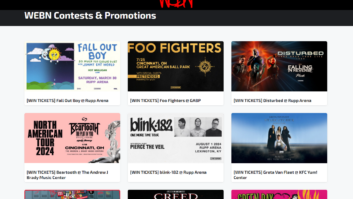At a recent conference presentation on the future of the music industry, a fellow panelist asked the audience if they agreed with his contention that it had now “become voluntary to pay for music.”
This provocative statement brought into clear focus the magnitude of change that the music industry has undergone in recent years — and by the way, no one disagreed with him.
The music industry faces a unique challenge, in which external forces have conspired to eviscerate its traditional business model, while everything else around it remained largely the same.
Neither supply nor demand for music has abated — if anything, they have both grown — but through a strange set of combinational circumstances, the context within which the industry monetizes this process has shifted, and revenue thereby produced has dwindled substantially. Although some in the industry like to point fingers in blame for this predicament, no one element is wholly responsible.
Meanwhile, musicians continue to create music, and consumers continue to listen to it via a growing number of venues and platforms, but the traditional marketplace has almost disappeared.
It’s as if people suddenly sprouted wings and began flying themselves to distant destinations. They are still traveling just as much or more, but the airlines can’t fill their seats.
Sustainability
Certainly this is not the first time that new technology has caused an established business to suffer losses.
The classic case of the automobile’s impact on the buggy whip is fairly apt to the music industry’s woes here. But the music industry’s revenue flow is far more arcane and complex than the simple sale of a tangible product.
It is a complicated arrangement that includes musicians, composers, producers, studios, talent scouts, licensing agents (at multiple levels), concert promoters, broadcasters, manufacturers and lawyers — lots of lawyers. So some deconstruction is in order.
First, consider that when we talk about “the music industry,” we usually think of the labels, but clearly the industry’s scope extends well beyond this. Thus any attempt to re-engineer the industry must be holistic and fully inclusive.
The labels do play a key enabling role, however, adding value to the whole industry primarily through their processes of aggregation. But now the very need for this “middleman role” is being questioned, as both artists and consumers seek their respective individual paths for access and commerce with one another.
Therefore the labels are at ground zero of this transition’s impact, and are shouting the loudest about it.
Yet they are not alone. Radio has also played an important part in the traditional music marketplace, so as the current disaggregation trend continues, radio’s value as a collective promoter of content may also diminish.
The key to survival of this ecosystem is how sustainable the replacement business model will be. Or perhaps a better way to phrase this is whether such sustainability will flow from the entire range of new models as a whole, because it already seems evident that there may be myriad new approaches in concurrent use, and that no single replacement approach will prevail.
Recent months have provided much to examine in this respect.
One notable foray is Radiohead’s label-free, self-release of its much anticipated album “In Rainbows” as an unprotected download or a premium-packaged CD.
Even more groundbreaking was the band’s pricing of the download at whatever the downloader wants to pay, from free on up. This first overt application of true voluntary payment occurred a few weeks after the discussion at the conference noted above, and to date, the average “In Rainbows” downloader is paying about $8.
Meanwhile, other artists from Madonna to Trent Reznor have announced they will forego their traditional label arrangements and seek some method of independent access to customers. (None have yet gone so far as Radiohead to allow the consumer to choose what they’re willing to pay, however.)
Yet another approach is the flat-rate subscription model, whereby a consumer has access to a selection of music content for a fixed monthly fee. This is more of a rental than a purchase model, however, since most of today’s subscription services do not allow unfettered copying of content (i.e., no burning to CD).
A variation on this scheme allows blanket licenses to be purchased for music usage (including fair-use copying) by large, contained groups of users, such as college campuses. Some have suggested that this approach be applied to ISPs for all their respective customers, and the costs recovered in the fees that the service providers’ charge to customers — like a tax or surcharge.
Still other options include traditional paid music downloads but without digital rights management, so once purchased, no restrictions are placed on the music’s usage by the customer. This more consumer-friendly approach seems to be gaining traction, and it is no less secure a digital format than the CDs the industry has been distributing for a quarter of a century.
At perhaps the extreme end of the spectrum is the idea that music downloads should be universally available for free, and revenue to the music industry would come from concerts and collateral sales.
For Sale By Owner
Again, the most likely outcome is some assortment of the above, including a bit of the old model and several coexisting variations of the new.
There’s plenty of room for variety, especially when you consider that some models will apply best to well-established artists, while others will be preferred by emerging talent.
Another useful analogy is the residential real estate market, where some homeowners prefer the FSBO (For Sale By Owner) approach, but many still go with a traditional Realtor. And there are agencies somewhere in between, helping FSBOs via aggregated listings and other services. A few “lightweight” indie labels or Web sites are analogous to the latter, such as Magnatune.com.
From a loftier perspective, one could observe that the value of aggregation is now simply moving downstream. Time was that artists needed a recording contract to even get their songs recorded, let alone promoted and played on the radio, then pressed and shipped to stores. The enormity of the entire industrial process made it impractical for individual artists to consider doing any of it themselves.
Not so today, where about the only place even an emerging artist really benefits from reliance on an aggregator is in the “last mile” to consumer — i.e., the music stores, either physical or online.
Established acts don’t need even that aggregation, as Radiohead’s sales of millions of copies of “In Rainbows” as an end-to-end independent effort has shown.
Old moguls, new revenues
This is not to say that the traditional powerhouses of the music industry will go quietly into that good night.
The RIAA continues to plow every field that appears remotely fertile, from suing users of unauthorized distribution sites to pushing for legislation and regulation that would mandate new royalties (including new performance royalties from local radio broadcasters).
Meanwhile the labels themselves are pursuing a range of new revenue opportunities, as Chris (“The Long Tail”) Anderson recently noted in his blog.
He points out that while CD sales are indeed off, many other monetized industry elements are experiencing strong growth, such as concert tickets, promotional merchandise, digital music downloads, ringtones, licensing of music for commercials, TV shows, movies and video games, revenue from hardware (sales of some satellite radio receivers and MP3 players generate royalties to labels), and even vinyl singles — lots of club DJs out there, apparently.
A new reality is settling in for the music business, and there is certainly no shortage of differing reactions to it. Whether the old players adapt or a new industry emerges remains to be seen. In any case, the status quo is no more, and there will likely be no return to it.
Next time we’ll look back at some of the other key issues that came to the fore in 2007 in our Big Picture year-end review.












